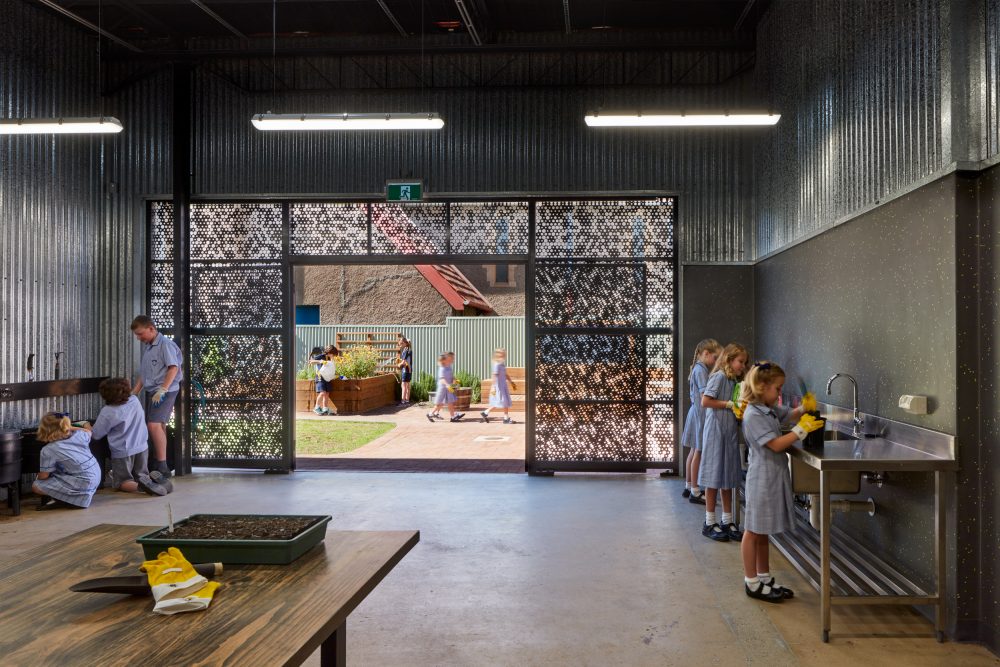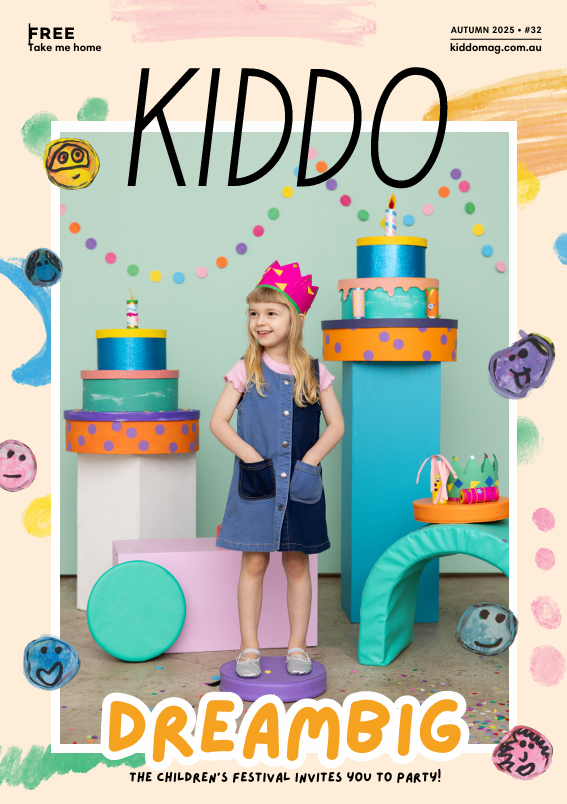WORDS: Nathan James Crane
For students, a large part of their day is spent inside a classroom which – until recently – was typically insulated from the outside environment. But educators and designers now both agree that the outdoors plays a far more important role in engaging learners than we once recognised.
Biophilic design, or Biophilia, has been a concept in design for a number of years, particularly in the commercial design sector for offices and public health buildings like hospitals and recovery wards. However, the concept is now seeing a resurgence, in the wake of a post-2020 world, where the importance of connection has been emphasised. There is a significant body of research that supports the practice of Biophilic design, with researchers in a project, led by the University of Melbourne, concluding that spaces which are connected to the outdoors increase learners’ energy, cognitive ability, attention and memory levels.
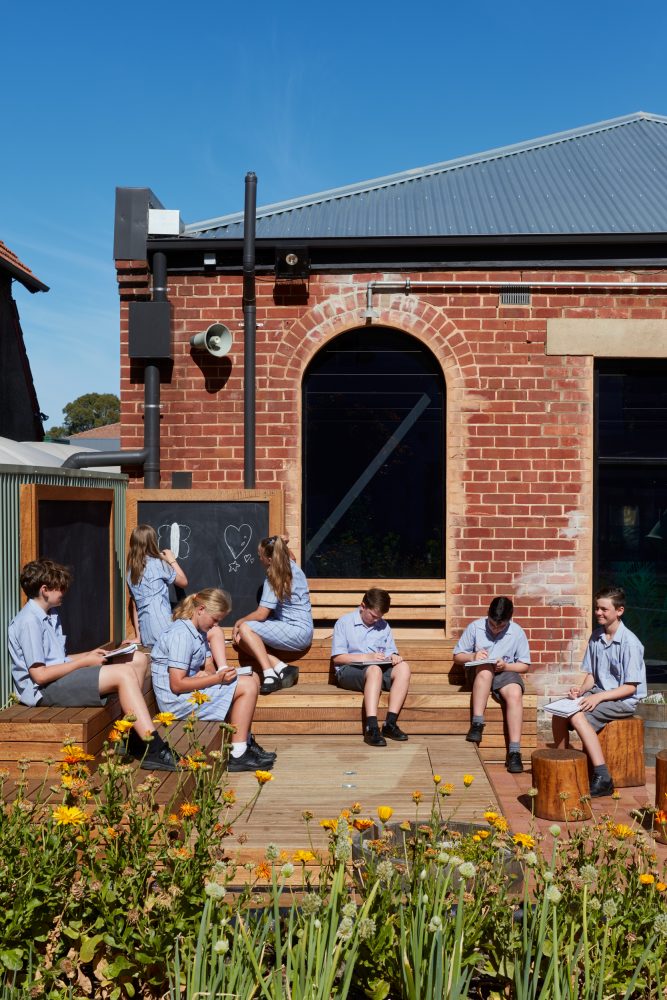
From a design perspective, bringing these environments to life for students is a delicate balance of aesthetic considerations and technical details like ventilation, lighting and acoustics. The Biophilic Design Initiative, launched by The Living Future Institute Australia (LFIA), provides education to built environment professionals to help reconnect people to nature and its benefits. Their framework has a number of elements that make up Biophilic design, which include place-based relationships, natural patterns and processes, environmental features, evolved human relationships, natural shapes and forms, and light and space.
In the most pragmatic sense, Biophilic design can involve integrating green spaces like gardens, trees and other elements including ponds and rockeries into the physical environment. In a more sensory approach, the intentional addition of natural lighting and ventilation provides less obvious, but equally valuable connections to the outside world.
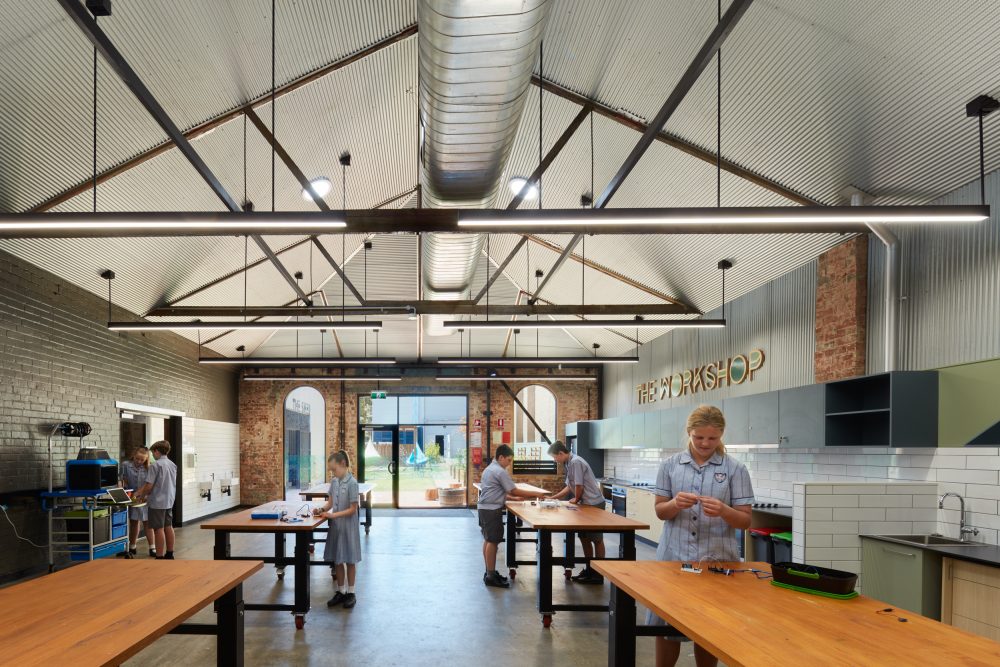
However, Biophilic design is more than just adding natural elements into the classroom, it influences the way that designers make decisions about the spaces they create for learning and the overall sustainability of a project. This can be seen in a number of practices and projects that have been recognised nationally as leaders in this space.
Take for example, The St Thomas School Ecology and STEAM Centre in Goodwood, by Grieve Gillett Andersen. The multipurpose facility includes a number of indoor/outdoor spaces in which students can engage with the environment to learn and even includes a produce garden used for cooking classes so students can learn the food cycle of farm to table. The project won the 2021 Learning Environments Australasia Awards for Best Small Project.
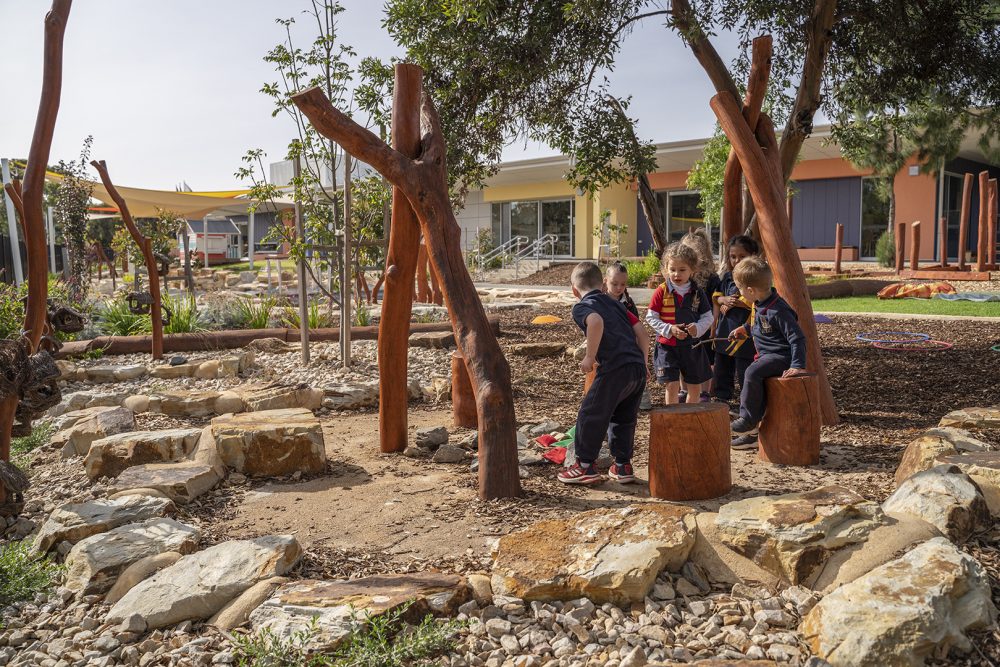
Nature play is also an essential component of a Biophilic design approach taken in schools, most often seen in Early Learning Centres (ELC) and Primary and Middle Schools. From custom-built play spaces and courtyards, to adventure playgrounds and child-led activities, outdoor nature play designs have come a long way from the sandpit and concrete pipes of the past. One such project is The Woodcroft College ELC Outdoor Learning Area, by Swanbury Penglase. This outdoor play space, which features a dry creek, several bridges and breakout lawn spaces allows for nature-based enquiry to take place in this outdoor learning space. The project won the 2021 AILA SA Award of Excellence for Health and Education Landscape.
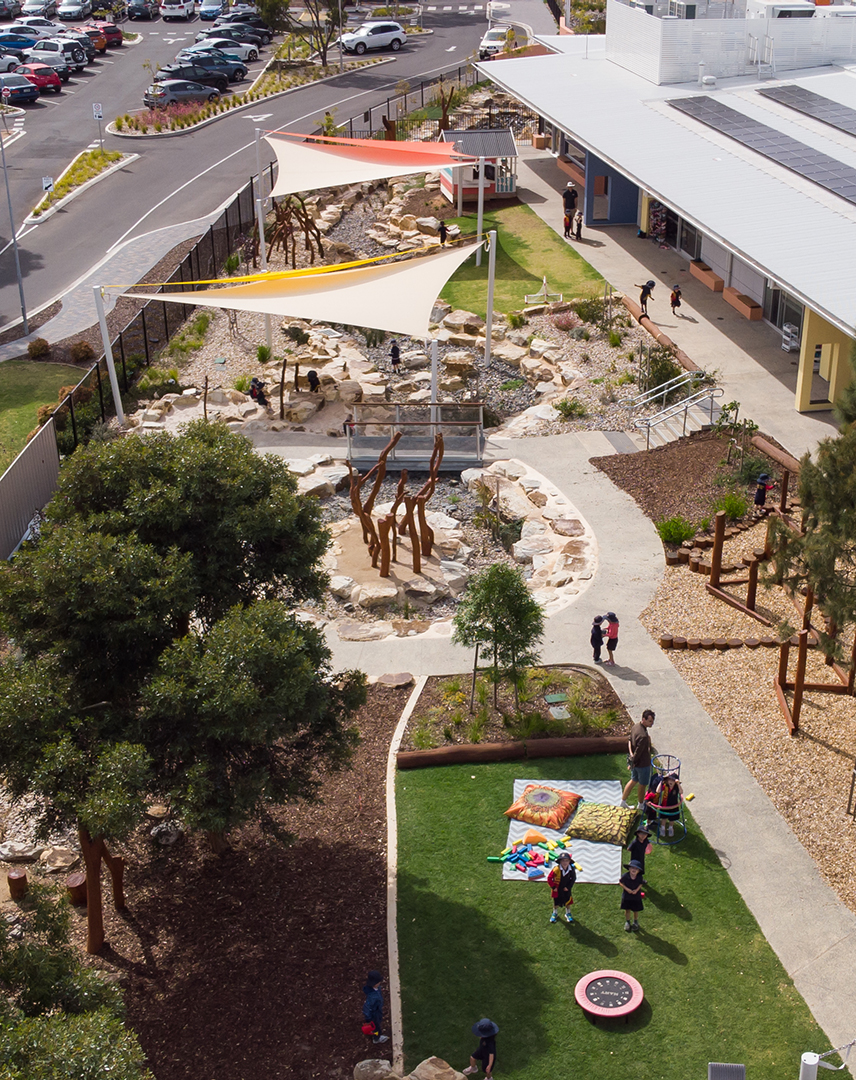
Biophilic design is also being embraced to disrupt adult learning spaces that have for hundreds of years been traditionally lecture-hall style spaces that discourage active learning practices. There are a number of international and interstate examples of Universities and Higher Education settings that are now beginning to embrace Biophilic design principles into social hub spaces as well as other learning spaces on their campuses.
This integration of play, nature and the psychological benefits is still an emerging area for education spaces, but has the potential to also inform the social conscience of young people, with sustainability and the climate crisis as major challenges that will need to be increasingly top of mind.
Holistically speaking, Biophilic design considers the relationship between people and the environment and places this connection at the centre of the design process. Excitingly, the design potentials that arise from such an emphasis, establishes wellness and cognitive health as a priority in education settings. This well-documented shift in design approach, which centres on supporting creativity, wellbeing and constructive learning environments, sits very comfortably with advancing attitudes towards the science that underpins Biophilia.
Not to be forgotten is one other very important and culturally significant aspect to Biophilic design, that is lesser discussed, but nonetheless deeply valuable for learners. Biophilic design facilitates a deeper connection to Country, to the land, and to the traditional knowledge that has underpinned Aboriginal custodianship for thousands of years. Within its very intention, nature and the importance of place is enshrined in the process of design and space making, signifying its value to the way we live, work and learn. By infusing our educational settings with the natural environment, and then actively discussing these decisions within our school communities, we can not only positively, but proactively encourage curiosity, pride and perhaps even conservation of indigenous storytelling, connection to Country and our history.
Increasingly, the aptitude and knowledge of Biophilia is becoming a minimum design consideration for all projects in the education sector. As indicated earlier in some of the local award-winning examples, as well as those yet to be announced, there is an upswing of enthusiasm and support from both the design community and its clients (both public and private education providers) that will see Biophilic design principles continue to be embraced over the next few years.
In returning to the starting point of this article, Biophilic design seems now more than ever, an antidote to the loss of connection that most of us have felt over the past few years. In supporting our children to embrace the outside world through nature play and positive design interventions, emerging education environments signal a new way forward to reconnect young minds to a world full of learning, one landscape at a time.
Dr Nathan James Crane is a design academic, writer, educator and SA/NT Deputy Chair of the Design Institute of Australia.
